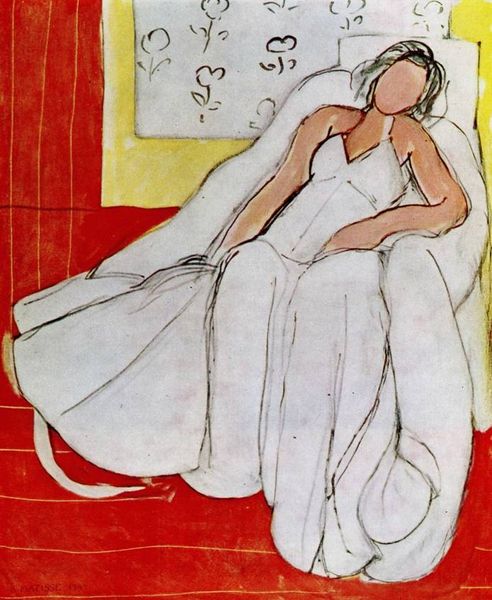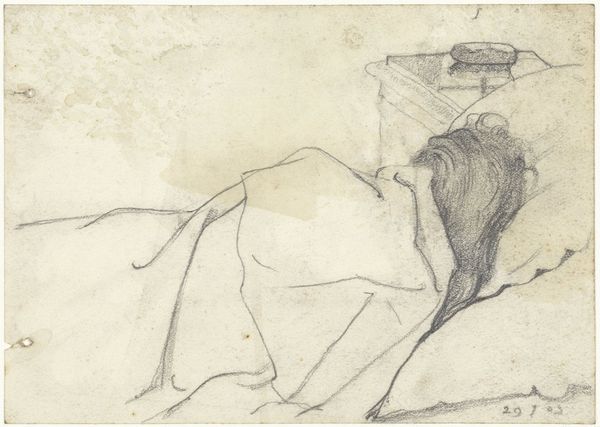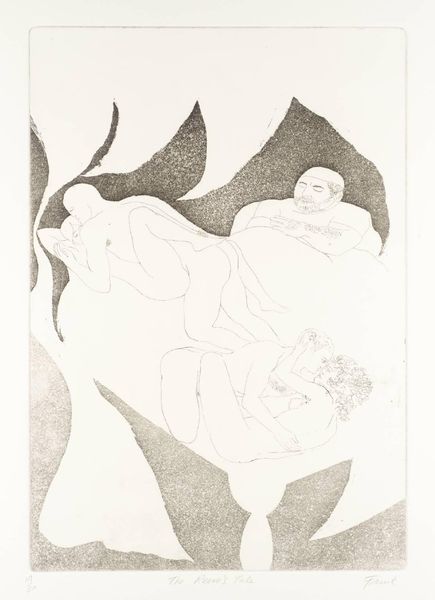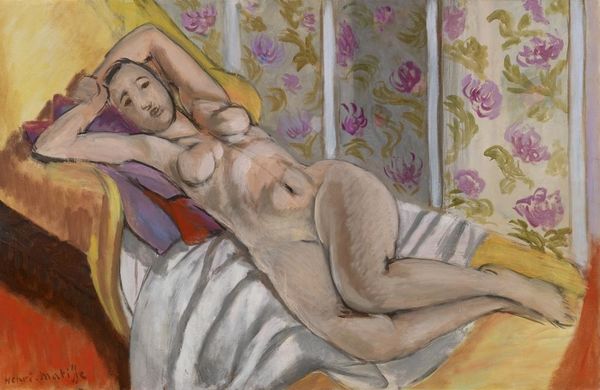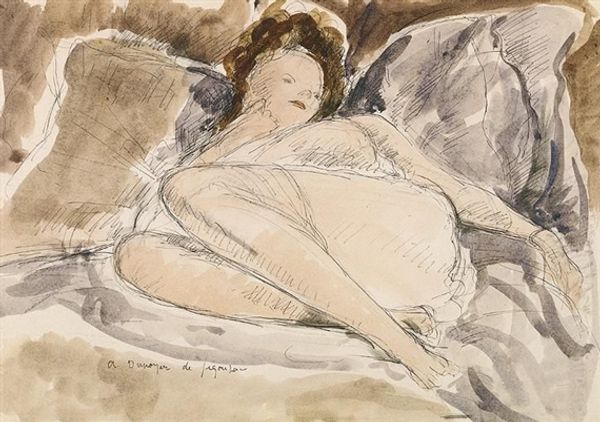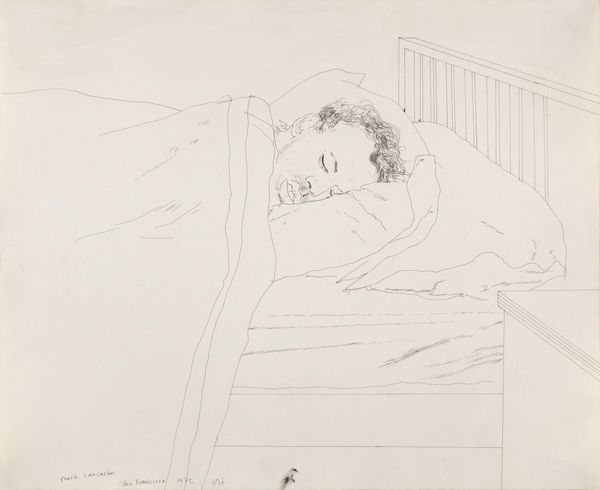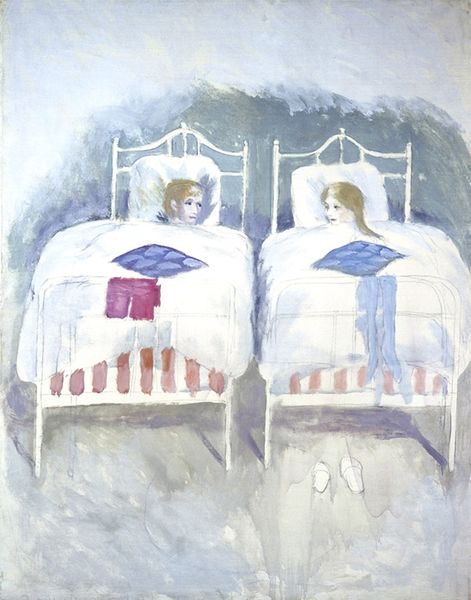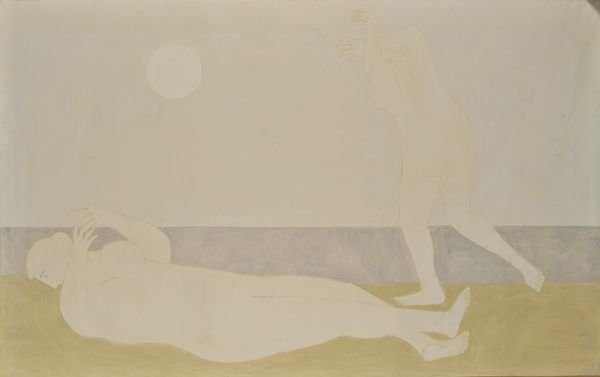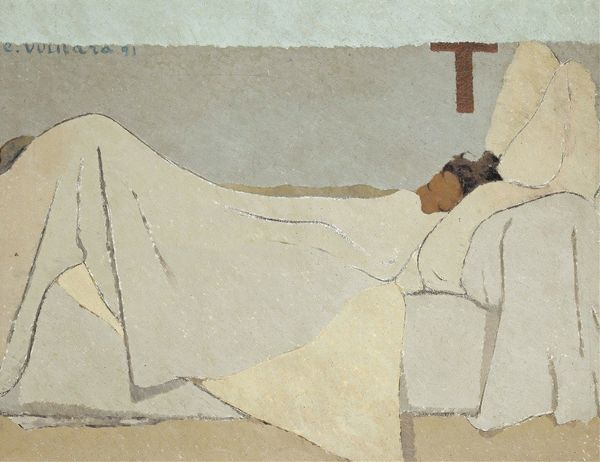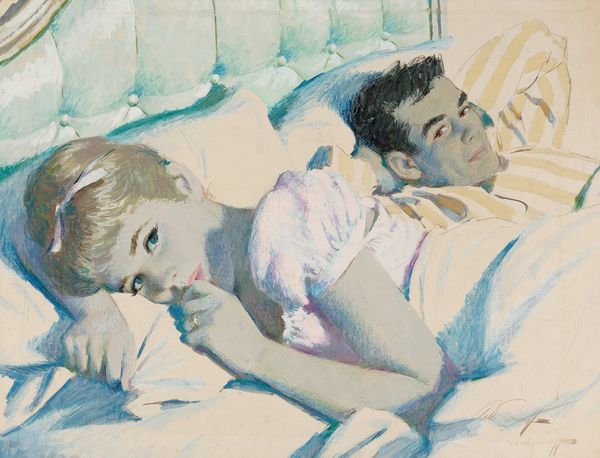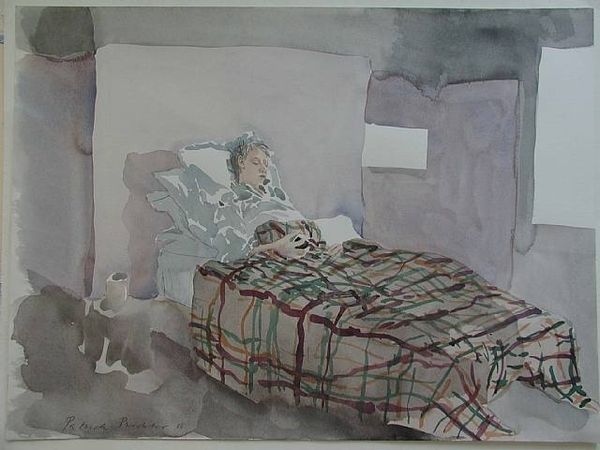
painting, watercolor, ink
#
portrait
#
painting
#
figuration
#
watercolor
#
ink
#
intimism
#
genre-painting
#
watercolor
Copyright: Patrick Procktor,Fair Use
Editor: We're looking at Patrick Procktor’s “Mathilde Verlaine in Bed,” from 1968. It’s a watercolor and ink piece that feels surprisingly intimate. I'm drawn to the ethereal, almost dreamlike quality of it. What captures your attention in this work? Curator: That’s a great first impression. It’s true, isn’t it, how Procktor manages to blend such fragility with a potent narrative. For me, it’s the very deliberate use of watercolor washes. He doesn’t hide his process; instead, the fluidity becomes part of the emotional language. And it invites contemplation. Do you feel a sense of voyeurism here, or something else entirely? Editor: Maybe a bit voyeuristic. I mean, we're observing a private moment. The loose lines make it feel almost like a fleeting memory. The person kneeling by the bed – are we supposed to know who they are? Curator: Procktor had such a delicious way of layering hints, didn't he? The title clearly references Mathilde Verlaine, but the relationship between the figures is deliberately ambiguous, it leaves the narrative open, doesn't it? That's why this painting invites a kind of gentle speculation. Editor: That makes sense. The vulnerability almost hurts. It's interesting how much emotion he conveys with such simple, transparent washes of colour. It almost feels like eavesdropping on someone else's memory. Curator: Precisely! It’s a tender echo, seen through Procktor's distinctly gentle filter. Editor: I’m leaving with a completely new understanding of how materials and implied narrative can really amplify a work's emotional resonance. Curator: Me too! Thank you for illuminating the poetry behind Procktor's intimacy. It truly resonates, doesn't it?
Comments
No comments
Be the first to comment and join the conversation on the ultimate creative platform.
